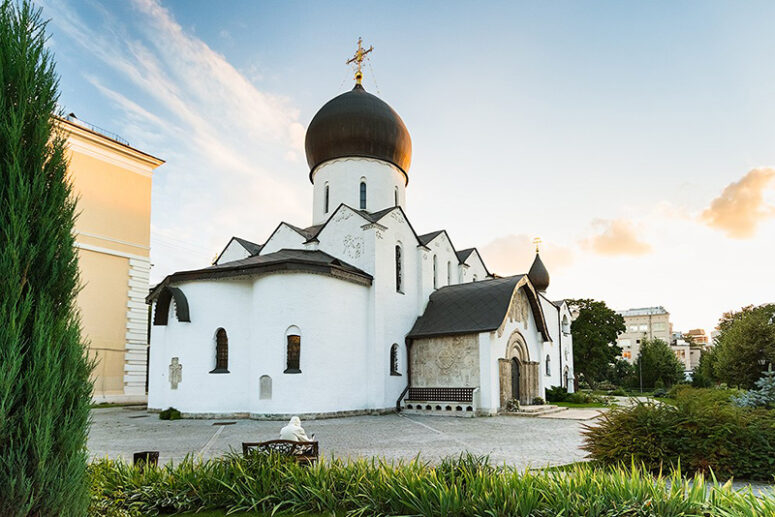
Two years after the assassination of her husband Grand Duke Sergey Romanov Grand Duchess Elisabeth Romanov established in 1909 the Marfo-Mariinsky Convent in Moscow. At that point, she had spent a third of her estate on forming the community and doing charitable work. During her lifetime, the Convent had a short history. Yet it gained a reputation and worldwide fame, which it has kept to this day. What makes the Convent stand out among all others?
One in its kind
As conceived by St Elisabeth, the Convent combined social ministry with a strict monastic rule. The lay sisterhoods common in Russia at her time did not conform to her idea of a charitable community – members of these charitable groups still attended balls and led secular lives. Nor was the existing tradition of monasticism acceptable to her, as it focused almost exclusively on contemplation and prayer and ignored nearly all worldly activities, such as work at hospitals and other types of social ministry.
At her Convent, the sisters of charity did not take lifetime vows but started with shorter commitments of one, three or six years. That way, the sisters attune themselves to monastic lives before taking formal tonsure. Alternatively, they could choose to leave the convent and marry, or become tonsured as a nun without serving as a conventual. In her conception of monasticism, Saint Elisabeth combined two models of service to Christ: active, as exemplified by Martha, and contemplative, like that of Mary. This conception made her Convent distinct from all other forms of monasticism.
Whether Elisabeth Romanov herself accepted tonsure is an open question. Her letters suggest that she had the intention of doing so towards the end of her life. If she had taken tonsure, it was in a secret ceremony.

The sisters of mercy
Joining the Convent as a sister of mercy was open to young unmarried women or widows at least 21 years and no more than 40 years of age. They had to be physically fit and belong to the Orthodox Church. The candidates’ duties were extremely demanding, both physically and spiritually, so the selection criteria were high. The sisters were required to complete medical training and religious instruction to achieve a high standard of performance. The Convent opened with only ten sisters, but their number increased to seventeen a year later. This included the Grand Duchess, who became its Mother Superior.
The sisters fell into two categories. The ‘sisters of the cross’ would have completed the rites of initiation and wore a large cross similar to that of a priest. Apprentices or disciples were recruited from the orphanage and aspiring to become sisters. At the time, this practice was not different from most other sisterhoods in Russia.
The sisters spent most of their time visiting the poor. Together with the Mother Superior, they made regular rounds of the homeless shelters, helped homeless children find places at orphanages and finding jobs for the unemployed. In its peak years, from 1914 to 1917, about 150 sisters were serving there.
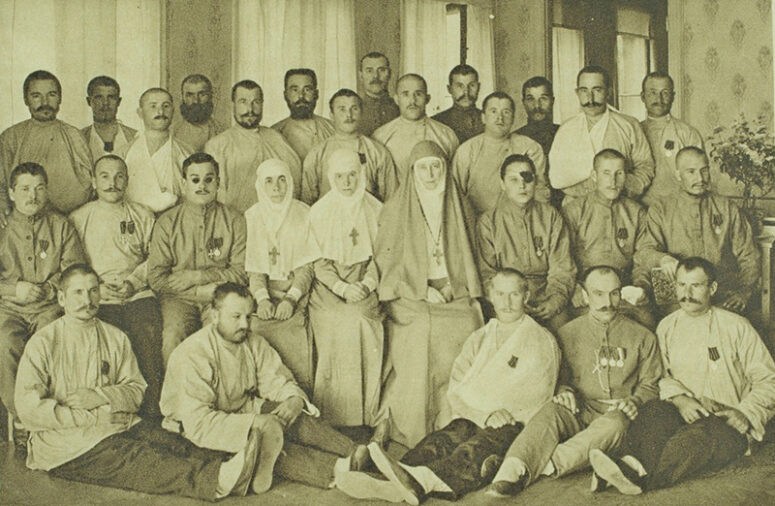
The Mother Superior
Agrippina Kutomkina, the last and a disciple of Saint Elisabeth, remembers that the Grand Duchess always climbed two steps at a time, despite her feminine image. To keep good discipline, she walked around the cells at night to check if any of the sisters were not asleep. She was very strict with those who were neglectful of their duties. When giving an injection, she made the sign of the cross over the spot where she was about to insert the needle.
Expanding the ministry
Saint Elisabeth worked hard to facilitate the construction of the Convent’s two churches. The hospital church of Martha and Mary was consecrated in 1909, and the Church of the Protection of the Mother of God in 1912. The Church of the Protection had a secret stairway to the underground vault where St Elisabeth had willed to be buried. Her will was never fulfilled. Because of the revolution and multiple regime changes, the relics of the saint were laid to rest in the Holy Land, where they have remained to this day.
Apart from the churches, the convent started with four buildings: a sisters’ compound with a refectory, a large hospital with an outpatient clinic, mother superior’s quarters, and the clergy house. The clergy house accommodated an impressive public library, classrooms and a dormitory for orphaned children. It was also home to the Sunday school for women factory workers. When the number of the sisters grew, a three-storied dormitory compound was built for them. Eventually, the Convent acquired several more buildings nearby. One housed a soup kitchen for the poor, serving hundreds of meals a day for a symbolic price. Next to the soup kitchen were the apartment quarters providing affordable housing for poor working women.
First hospital patient
The first surgery at the hospital for the poor was performed on the Grand Duchess Elisabeth – its surgeons successfully removed a benign tumour. Traditionally, the hospital has been seen as one of the Convent’s great achievements, and the surgical ward had a reputation for being one of the best in Moscow. Thirty-four best doctors worked here as volunteers. The Convent’s pharmacy supplied the poor with free medicines.
Despite the hospital’s great popularity, the grand duchess resisted its expansion beyond its existing capacity of twenty hospital beds. She was concerned that this might distract the sisters from their main mission – visitation and caring for the poor. Moscow had a sufficient number of hospitals, but a dire shortage of social workers.
A confessor from God
Power and responsibility at the Convent were fairly divided between the chief priest and the Mother Superior. The former was responsible for the spiritual matters, and the latter handled the administrative tasks in consultation with the chief priest.

Father Mitrofan, the chief priest, did not take his position by choice, but rather the Providence of God. In 1908, the Grand Duchess offered Father Mitrofan the position of the Convent’s confessor in acknowledgement of his invaluable advice on its organisation. At first, he rejected the offer, and immediately and soon lost the use of his right hand. He took it as a sign of God’s will. He vowed to accept the position and found healing shortly thereafter.
Expecting her arrest in 1918, Elisabeth Romanov entrusted the community to the care of Father Mitrofan. He took monastic tonsure with the name Sergius and served at the Convent until arrested and exiled in 1923. Father Sergius died in 1948 and was glorified as a new martyr and confessor of Russia.
After the martyrdom of its founder in 1918, the Convent existed for almost 8 years. In 1926, many sisters were exiled to Central Asia, and its premises were occupied by various secular institutions. In 1928, the Bolsheviks closed the Church of the Protection of the Mother of God.
Spiritual mission
In addition to charitable work, the Grand Duchess and her confessor saw the Convent’s ultimate goal ministry among the disadvantaged residents of Moscow. Elisabeth Feodorovna wrote: “Beyond material aid, we bring the needy the light of Christ.” Consistent with this principle, Father Mitrofan held weekly talks with the sisters about faith and the Holy Scriptures, so that they could preach outside the walls of the monastery with confidence.
Marfo-Mariinsky Convent today
The revival of the Marfo-Mariinsky Convent began in 1992. In 2008, the entire complex of the buildings was fully renovated. The former quarters of the Grand Duchess Elisabeth are now a museum exhibiting her personal belongings and letters.
At present, there are more than 40 nuns and only three Sisters of Mercy (as most former sisters of mercy have taken monastic tonsure. There is also an active sisterhood with ten members 10 and some volunteers. Without being residents of the Convent, they assist in the performance of tasks that monastics do not normally undertake.
The Convent’s Mother Superior Elisabeth (Pozdnyakova), believes that it is not fully possible today to return to the old ways of the time of Saint Elisabeth Romanov. “Today, the Church social ministry is mostly the prerogative of the laity,” says Nun Elisabeth. “Our staff and volunteers are doing exactly what the Sisters of Mercy did under the leadership of Grand Duchess Elisabeth.”
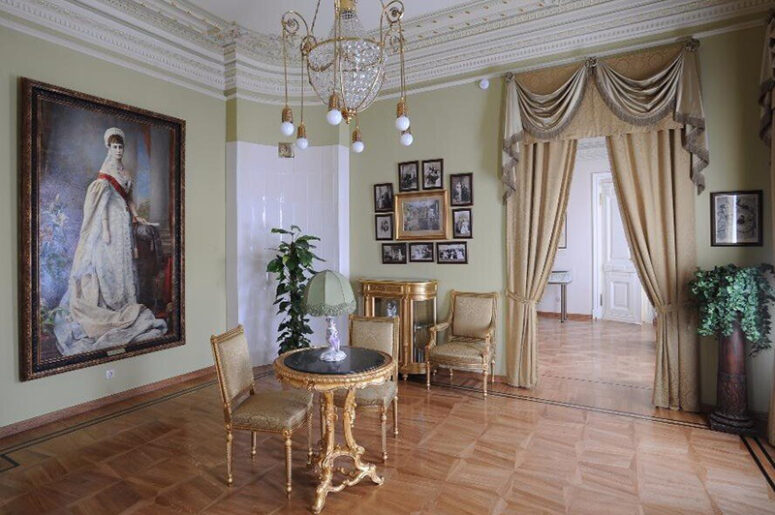
At present, the sisters of mercy are engaged in several projects, that serve children and adults with disabilities, hospital patients and the homeless, provide home care, and assist orphaned children and families in need.
Saint Elisabeth’s example of dedicated service to the people inspired Father Andrey Lemeshonok to establish in Minsk a convent in her name. Eventually, he became its spiritual father. Saint Elisabeth Convent grew out of a sisterhood of the same name. – From the Convent’s first days, its sisters of charity – now numbering more than three hundred, have dedicated themselves to serving mental patients, residents of care homes and providing home care. Saint Elisabeth Convent followed the example of Marfo-Mariinsky Convent not only in the pursuit of its ministry but also by practising weekly meetings of its sisters of charity with its spiritual father.
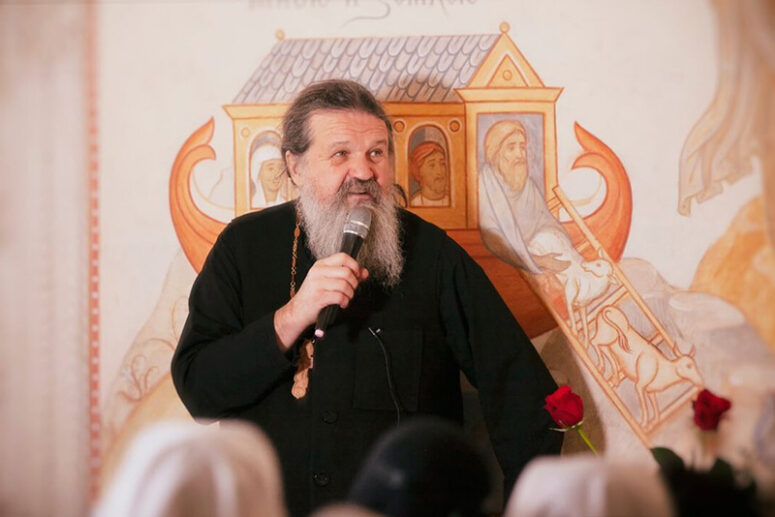
With God’s blessing, the tradition of charitable work set by Saint Elisabeth Romanov has remained alive. It is followed not only by the Marfo-Mariinsky Convent that she had established but also by many others established according to its model.
Source used: https://www.pravmir.ru/marfo-mariinskaya-obitel-nepovtorimyj-obrazec/




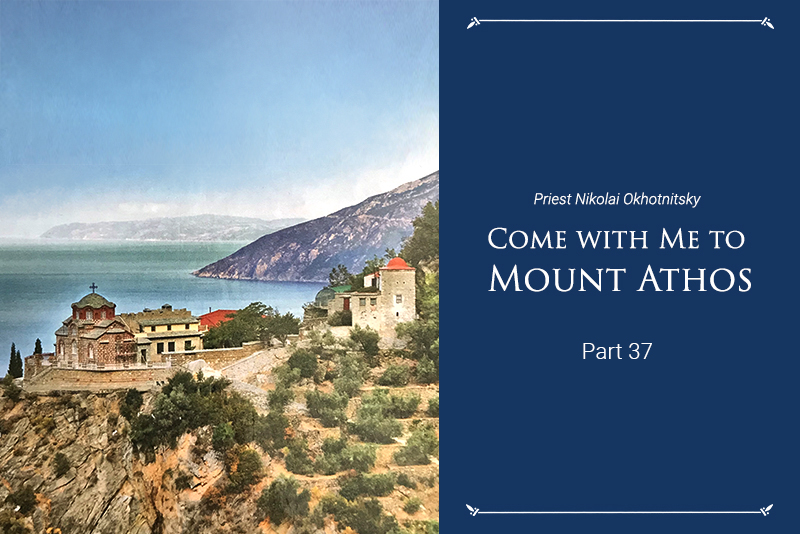
Thank you.
Thank you for this.
Thank you for your informative site. I enjoy reading and studying more and more about Elizabeth and the Marfo-Mariinsky Convent and all the history. I was trying to find out exactly where in Turkestan the last 18 nuns were exiled to when the order was disbanded circa 1927/28. I so wonder who they were, where they were taken in Turkestan and how they lived then and what happened to them. I wonder if there are any written records or accounts.
I started earlier tonight to read about Queen Victoria ‘s daughter Princess Alice, who died young at age 35. She was Elizabeth’s mother.
All very interesting but certainly tragic.
Any thoughts on how to find out about the 18 last nuns who were exiled?
Thank you.
Susan Atteberry
Thank you for your kind words, we are glad that you find our blog articles useful. In fact, in order to cover the life of the nuns of Marfo-Mariinsky Convent after its closure, it would be necessary to write another article, and maybe we will do this one day. But for now I can briefly reveal a little more information about their future fate.
One of the nuns suffered martyrdom in 1938 and was canonized. The rest of the sisters can be considered confessors, because after the monastery was closed in 1926, they indeed were sent into exile in Central Asia, in Turkestan, where they continued to endure sorrow with faith and fearlessness, do works of mercy and live according to the commandments of God.
And although at that godless time of Soviet power, the sisters in exile were under the close supervision of law enforcement agencies (they were watched, periodically interrogated, and threatened), they actively helped other exiles, served God and their neighbors in a variety of ways using their talents. There is even information that with their love and humility the sisters got through the stony souls of some of the guards.
May God bless you!
Sister Anastasia